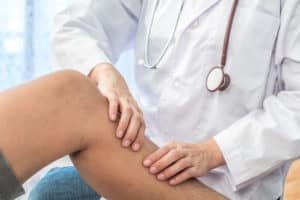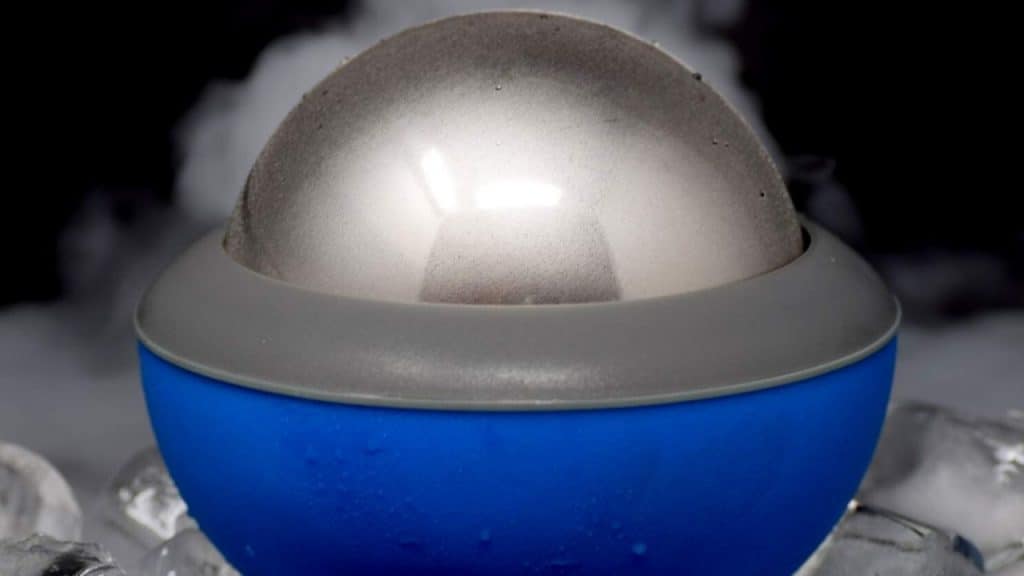If you have tendonitis pain, you could probably go for a good massage right now — it’s a great way to encourage healing.
So many of the things we do repeatedly on a daily basis can cause damage to our tendons, such as gripping a basketball, gardening and even scrubbing the pots and pans.
Without using proper techniques that will protect our musculoskeletal system, that elbow grease you’ve been putting into your casserole dish could cause some damage.
Treatments like tendonitis massage can be very helpful in the healing process, but there’s more to it than simply booking a timeslot and laying on the table.
Talk to the Doctor

First things first, if you’ve injured yourself, you should always see a qualified medical professional.
While you can feel what’s happening, our musculoskeletal system is really complex, and there are many muscles, ligaments, tendons and bones you didn’t even know existed.
Your doctor can give you a better sense of what’s going on, including if you need to go for an x-ray, ultrasound or MRI and what the correct steps to recovery are, including tendonitis massage.
Some common forms of tendonitis are, achilles tendonitis, tennis elbow, trigger finger or thumb, tendonitis of the wrist and de Quervain’s stenosing tenosynovitis.
Do You Have Tendonitis?
Tendinitis is inflammation or irritation of the tendon, which is a thick fibrous cord that connects muscle to bone. In fact, the suffix “-itis” means inflammation (think about arthritis, bronchitis, tonsillitis).
Tendonitis is a result of micro-tears that happen when sudden tension or force is put on the tendon. It’s most often associated with pain outside of the joint, and is most common around our shoulders, elbows, wrists, knees and heels, but it can happen with any tendon and cause pain, stiffness and muscle weakness in the surrounding area.
Tendonitis is a very common diagnosis. However, experts are finding that what they assumed to be tendonitis is very often tendinosis.
Do I Have Tendinosis?
Tendinosis is the deterioration of collagen in the tendon after long periods of overuse. Unlike tendonitis, it is not marked by inflammation and is a chronic condition.
Tendinosis happens when the tendon doesn’t have time to heal and rest, and there is a decrease in blood circulation. The smallest of movements can cause tendinosis when done repeatedly, even typing on your phone or clicking a mouse.
It’s important to get the proper treatment for tendinosis, as tendonitis can take three to six months to heal on its own with some minor care. Improper care can lead to weakness and further injury in the future.
If you make regular treatment a priority, you can speed up the healing process and improve the long-term outcomes.
…Or Is It Tenosynovitis?
Tenosynovitis is the inflammation of the tendon and its synovial sheath, which is a membrane that covers and protects the tendon. It can be caused by any number of things that can cause tendonitis, including infection or disease (diabetes, rheumatoid arthritis, etc.), or even by wearing a new pair of shoes.
In cases where tenosynovitis is infectious, treatment involves surgical drainage and antibiotics, which is why it’s important to speak with your doctor. Diagnosis is typically done by x-ray and a test called the Kanavel’s cardinal signs.
Treatment for Tendonitis
Recovery In The First 48
While making massage a part of your treatment is an excellent way to promote faster and fuller healing, it’s important to wait between 24 and 48 hours after the initial injury, or for when inflammation has subsided.
Some professionals even encourage up to 72 hours. Of course, it depends on the severity of the injury.
The reason for waiting is that massage increases blood circulation, and this can increase the chances of edema (excess fluids becoming trapped in soft tissue) and hemorrhage (loss of blood from damaged blood vessels, aka internal bleeding), which both impede the healing process.

RICE
Your doctor or therapist may recommend the RICE method, which is commonly used for muscle, tendon and ligament injuries. It stands for:
R – Rest
I – Ice
C – Compression
E – Elevation
While this is a common instruction for the first 48 hours after a tendon injury, many experts believe that too much rest can actually do more harm than good, especially in the case of tendinosis where the injury is a result of underdevelopment.
While they say to avoid strenuous activities, carefully working the tendon is seen as beneficial and can be made safer with the use of supportive devices like thumb splints and knee braces.
Not only that, but they agree that involving massage in the treatment plan can improve healing time and positively impact long-term outcomes. However, tendon rupture, which is a partial or complete tear of the tendon, requires surgery, in which case massage could actually be harmful.
Tendonitis Massage Therapy
Massage therapy has proven to be a beneficial form of treatment for tendonitis. However, with any massage, particularly with tendonitis massage or any massage for injury, it is important to seek out a qualified massage therapist who knows how to provide proper treatment that will not further exacerbate the issue or cause new ones.
Massage therapists have extensive knowledge of our musculoskeletal system and how to provide various forms of treatment that will encourage healing and overall improvement. There are some specific massage techniques that can be used for tendinitis and other tendinopathies.
The common method is deep transverse friction massage therapy, which is used for injuries of the shoulder, elbow, back of the heel or thumb-side of the wrist.
Unlike the deep tissue massage you might’ve had before, it involves stroking the area of the injury with gentle pressure in a perpendicular back and forth pattern with sustained pressure.
Though friction therapy is the usual modality, there are different treatment goals for tendinitis versus tendinosis:
Tendinitis
Friction therapy is used to break up scar tissue and encourage alignment in new tissue formations.
Tendinosis
Friction therapy is used to stimulate fibroblast cells, which create collagen.
Self Massage for Tendonitis

You can do a version of friction tendonitis massage therapy yourself, as it involves gentle rubbing in a back and manner forth over the inflamed tendon.
Using the pads of your fingers or thumb, apply gentle to moderate pressure on the area of greatest tenderness — the spot that is most sore to the touch. You want to stroke slowly but with firm pressure back and forth across the area at a perpendicular angle to the muscle fibers; not parallel like in other massage styles.
Apply friction in this way for one to two minutes until any sensitivity subsides. Next, slightly increase the intensity of the friction and continue for one to two minutes until the sensitivity subsides. Finally, you will once again slightly increase the friction intensity, continuing for one to two minutes until the sensitivity subsides.
Following this, you want to apply ice to the area for a few minutes or until the area is numb. This will help reduce some of the inflammation and offer pain relief.
Be aware of the sort of pain you’re feeling. Remember that even though you’re using gentle pressure, there is likely to be some discomfort. However, it should be bearable.
If you feel only a dull pain or no pain at all, you’re likely massaging the wrong spot. On the other hand, if you can’t bear the pain, try letting up on the pressure. If it’s still too painful, it’s likely that the injury is serious and needs medical attention.
Bottom Line
Tendon injuries aren’t to be taken lightly, as improper care and treatment can lead to chronic tendonitis and tendinosis. As we discussed, we can injure our tendons doing normal everyday things. If and when that happens, taking action should be a priority.
Tendonitis massage has proven time and again to be an effective way to heal and encourage long-term health. While for some of us going to massage or physical therapy regularly isn’t in the budget, we can do tendonitis massage at home.
Just make sure to follow proper protocol so that you’re helping, not hurting, tendon recovery.


